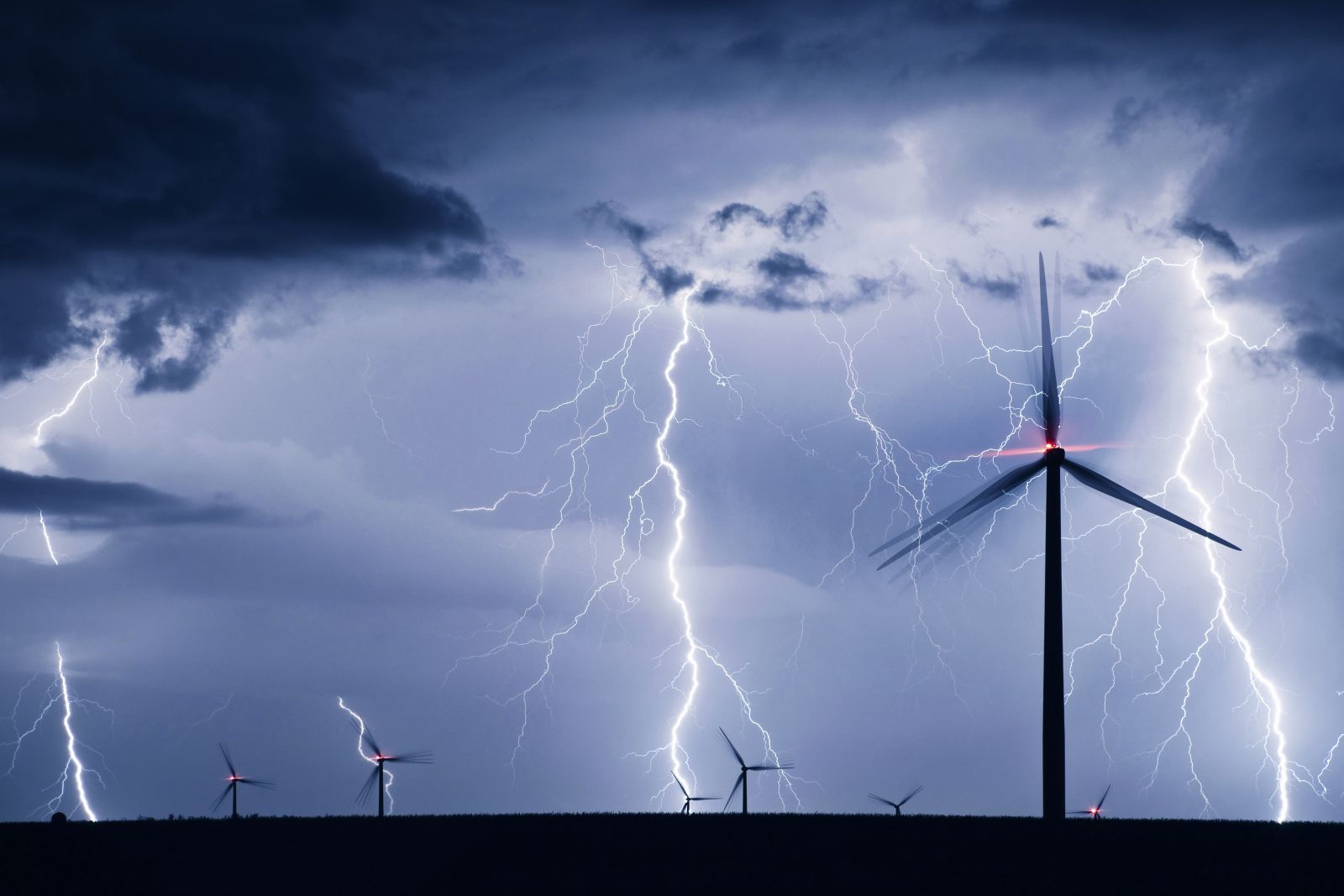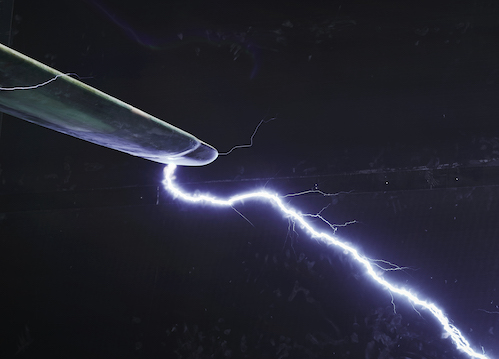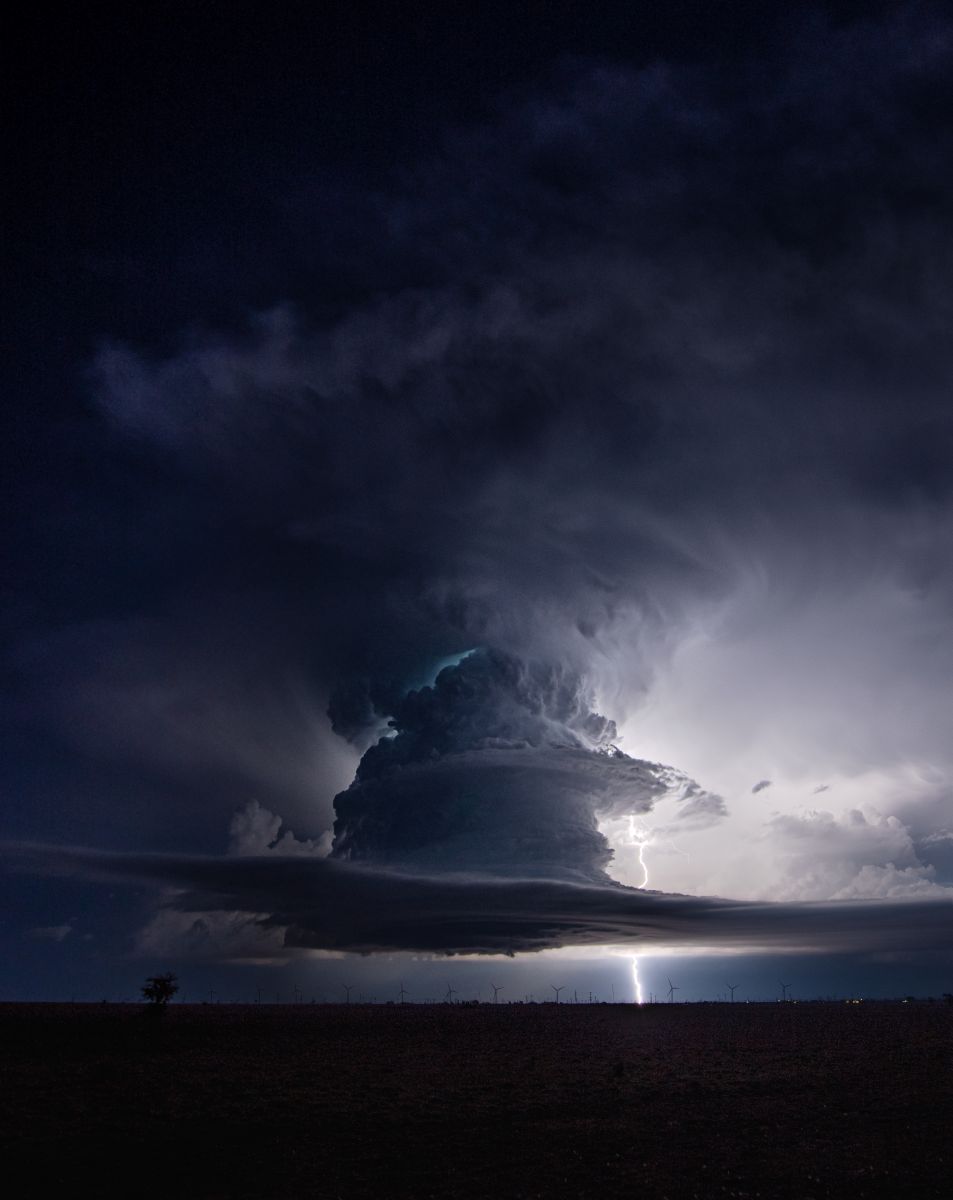Lightning: When avoidance is not an option
“Lightning is not an issue at our site.”
“We have never had any lightning at our wind farm, why would we start having them now?”
“Chances of a lightning strike are low, so we prioritize other things. We will just go ahead planning the installation and hope for the best.”
Sound familiar? Lightning is sometimes treated as an issue that only affects some turbine parks. But the reality is different.

Lightning is one of nature's most common – and most destructive – spectacles. Around the world, there are over 3,000,000 flashes every day. And with the climate changing, we are seeing even more lightning events in areas that have never experienced lightning strikes before.
Tall structures like wind turbines are prone to being struck by lightning. This becomes even more profound as turbine sizes increase. Yet, being struck is just one effect of the phenomena: wind turbines also initiate lightning flashes themselves, which is known as upward lightning. And with the ideal wind turbine sites gone, developers and owners are forced to erect turbines at ever more remote locations with suboptimal wind classes, microclimates, and terrains.
When you combine the general lightning phenomena with new lightning patterns due to climate change, increasing turbine size, turbine-triggered upward lightning, and suboptimal (and remote) terrains, it becomes clear: avoiding lightning is not an option. But preparedness is.
Lightning damages, related repairs and downtime are major cost drivers in the wind sector. Onshore wind owners might be lucky to get a bill for “only” tens of thousands of US dollars; offshore, those costs could start at a six-figure scale. Materials, service, personnel, mobilization, logistics, loss of power production, weather delays – all these add to the costs for wind park owners and operators. With such an extensive effect, lightning preparedness offers a simpler and cheaper way out.
Preparedness centers around four main aspects:
- Assessing lightning risks on site.
- Designing and building robust blades, lightning protection systems (LPS), and conductive components.
- Verifying the LPS performance by modelling and lightning testing.
- Monitoring the LPS performance in the field.
These complement each other in a way that enables owners and operators to be fully prepared to what comes next: lightning.
Lightning strikes vary across a single wind farm due to local topography and weather conditions. Whether it is onshore or offshore, understanding the lightning risks at a future or existing wind turbine site is crucial. When developers carry out a site assessment prior to installation, they get to know the expected lightning exposure, severity, and occurrence for the specific wind farm. This helps them to find an optimal weather window for turbine installation well in advance, lowering the risks for installation delays that otherwise lead to significant costs.
Engineering teams can also use the site assessment data during their blade- and lightning protection system (LPS) design. By integrating the local lightning risks into their models, they can make the turbine components and LPS more robust against lightning damage. And by knowing the individual risks for each turbine at a single park, they can customize the LPS even further to maximize protection and decrease costs.
 At an already existing turbine park, lightning assessment addresses other aspects, including how to prioritize an LPS retrofit or lightning measurement campaign, when to schedule retrofitting based on lightning seasons, and why are there static precipitation issues.
At an already existing turbine park, lightning assessment addresses other aspects, including how to prioritize an LPS retrofit or lightning measurement campaign, when to schedule retrofitting based on lightning seasons, and why are there static precipitation issues.
Lightning site assessment gives manufacturers, developers, and owners the crucial data they need for turbine and LPS design, and installation and maintenance planning – all of which help minimize lightning damages, expenses, and delays both in the short- and long term.
When it comes to the damages, manufacturers play a crucial role. As lightning is unavoidable, they have two goals in mind: first is making sure lightning strikes the turbine at the right place, and second is leading the current from the strike point down to the earth without causing any troubles along the way. Numerical models and computer simulations are essential to achieve these.
Models and simulations allow engineering teams to find the lightning attachment points, outline the risks of lightning strikes across the whole turbine structure, see how the current travels within the blade and across turbine components, or visualize side flashes, thermal damages, or any other indirect effects within the turbine. Feeding these results (and the ones from the site assessment) back to the blade and LPS designs - and adjusting them along the way - ensures an efficient and robust process that minimizes failures and delays upon prototyping and product testing.
 When manufacturers get to the lightning tests, they have a lot to consider: Choosing the right laboratory (accredited? Independent?); the type of lightning tests (standard setup or customized? High voltage or high-current tests?); and the turbine component to be tested (full-scale blade or just the tip? What about nacelles or blade bearings?). One thing is certain: all tests must be according to the international standards. Why? Because it allows a smooth and fast(er) certification of the new LPS, and ensures the developers and owners that the system will protect their turbines.
When manufacturers get to the lightning tests, they have a lot to consider: Choosing the right laboratory (accredited? Independent?); the type of lightning tests (standard setup or customized? High voltage or high-current tests?); and the turbine component to be tested (full-scale blade or just the tip? What about nacelles or blade bearings?). One thing is certain: all tests must be according to the international standards. Why? Because it allows a smooth and fast(er) certification of the new LPS, and ensures the developers and owners that the system will protect their turbines.
Lightning preparedness does not stop here; the LPS needs to be monitored after installation. Without monitoring, the owners and operators will not see if something needs to be replaced or repaired, or if the LPS is truly compliant to the real lightning conditions on site. You’ll find different monitoring solutions on the market, a few of which can even gather real-time data on the lightning characteristics and turbine conditions. With these, owners and operators can maximize their turbines’ performance, plan maintenance and inspections, and keep their turbines fully protected against lightning damages.
Lightning will not go away, and it cannot be avoided. Playing it safe costs less than those six-figure repairs. If the wind sector wants to boost the green transition, lowering costs and risks is key. It will not only help their own budgets (and reputation) but will shift public opinion to help push legislation, regulation, and investment in the sector forward.
The author is Søren F. Madsen at Polytech, a solution-oriented partner in the global wind sector.
Polytech | www.polytech.com
Author: Søren F. Madsen
Volume: 2022 May/June




.jpg?r=3532)




.jpg?r=6905)


